
Leptospermum scoparium, commonly called mānuka, mānuka myrtle, New Zealand teatree, broom tea-tree, or just tea tree, is a species of flowering plant in the myrtle family Myrtaceae, native to New Zealand and south-east Australia. Its nectar produces Mānuka honey.

The sooty shearwater is a medium-large shearwater in the seabird family Procellariidae. In New Zealand, it is also known by its Māori name tītī, and as muttonbird, like its relatives the wedge-tailed shearwater and the Australian short-tailed shearwater.
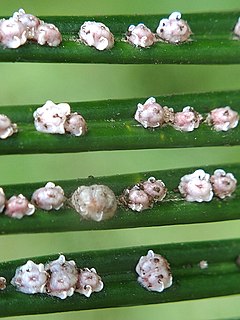
Scale insects are small insects of the order Hemiptera, suborder Sternorrhyncha. Of dramatically variable appearance and extreme sexual dimorphism, they comprise the infraorder Coccomorpha which is considered a more convenient grouping than the superfamily Coccoidea due to taxonomic uncertainties. Adult females typically have soft bodies and no limbs, and are concealed underneath domed scales, extruding quantities of wax for protection. Some species are hermaphroditic, with a combined ovotestis instead of separate ovaries and testes. Males, in the species where they occur, have legs and sometimes wings, and resemble small flies. Scale insects are herbivores, piercing plant tissues with their mouthparts and remaining in one place, feeding on sap. The excess fluid they imbibe is secreted as honeydew on which sooty mold tends to grow. The insects often have a mutualistic relationship with ants, which feed on the honeydew and protect them from predators. There are about 8,000 described species.
Ashley was a New Zealand electorate situated north of Christchurch. It was in use from 1866 to 1902, and was replaced with the Hurunui electorate.
Maskell or Maskel may refer to:
Pine honey is a type of honeydew honey. It is a sweet and spicy honey, with some woody notes, a resinous fragrance and dark amber color. It is a common breakfast dish in Turkey and Greece, where it is drizzled over yoghurt and eaten with bread.
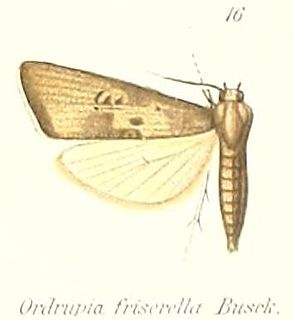
Copromorphidae, the "tropical fruitworm moths", is a family of insects in the lepidopteran order. These moths have broad, rounded forewings, and well-camouflaged scale patterns. Unlike Carposinidae the mouthparts include "labial palps" with the second rather than third segment the longest. With other unusual structural characteristics of the caterpillar and adult, it could represent the sister lineage of all other extant members of this superfamily. The genus Sisyroxena from Madagascar is also notable for its unusual venation and wing scale sockets.

The Margarodidae or ground pearls are a family of scale insects within the superfamily Coccoidea. Members of the family include the Polish cochineal and Armenian cochineal and the original ground pearl genus, Margarodes. Beginning in 1880, a number of distinct subfamilies were recognized, with the giant coccids being the first. Although Maskell proposed a new family, many continued to regard the monophlebids as a mere subfamily for many years, and the Margarodidae classification continued to be polyphyletic through the 20th Century. Since then, taking the advice of Koteja several subfamilies and tribes have been elevated into their own families such as Matsucoccidae and Xylococcidae. The pared-down family of Margarodidae is monophyletic.

Icerya purchasi is a scale insect that feeds on more than 80 families of woody plants, most notably on Citrus and Pittosporum. Originally described in 1878 from specimens collected in New Zealand as pests of kangaroo acacia and named by W.M. Maskell "after the Rev. Dr. Purchas who, [he] believe[d], first found it". It is now found worldwide where citrus crops are grown. The cottony cushion scale originates from Australia.

Nothofagus solandrivar.solandri, commonly called black beech, is a variety of the tree species Nothofagus solandri, endemic to New Zealand. Black beech occurs on both the North and the South Island at low altitudes up to the mountains. The other variety of N. solandri is called mountain beech or Nothofagus solandri var. cliffortioides, and grows at higher altitudes than black beech. In New Zealand the taxon is called Fuscospora solandri.
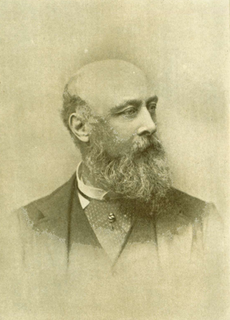
William Miles Maskell was a New Zealand farmer, politician and entomologist.
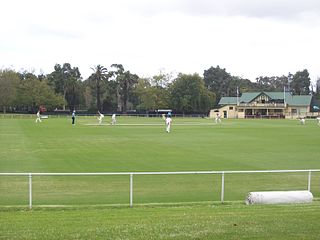
Albert Cricket Ground, also known as the Albert Reserve and previously as the Warehouseman's Cricket Ground, is a cricket ground in St Kilda, Victoria. It is operated by the Melbourne Cricket Club (MCC), and used as its primary home ground in the Victorian Premier Cricket competition.

John Evans Brown was a 19th-century Member of Parliament in New Zealand. Born in Pennsylvania, he came to New Zealand after spending time in Australia, where he was a farmer and US Consul. He farmed in Canterbury, where he was known as "Yankee" Brown. Three of his brothers in law, through his first wife, served as his fellow Members of Parliament. He married a second time, as his first wife died young, and moved back to the United States. On his father's land in Asheville, he came to considerable wealth due to the mining of mica.
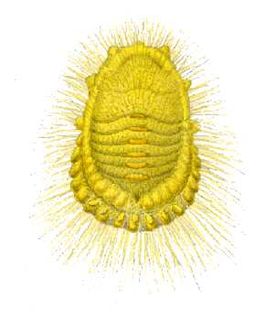
Monophlebidae is a family of scale insects commonly known as the giant scales or monophlebids. They occur in most parts of the world but more genera are found in the tropics than elsewhere.
Phenacoleachiidae is a family of scale insects commonly known as the phenacoleachiids. They are found only in the South Island of New Zealand, and on certain offshore islands. There are two species in a single genus.
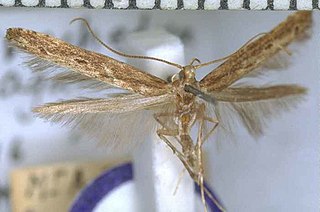
Batrachedra agaura is a species of moth in the family Batrachedridae. It is endemic to New Zealand. This species is distributed throughout the country. The species inhabits native forest especially beech and kanuka forest or manuka scrubland. The larvae of this species is associated with sooty mold and with sooty beech scale. It has been hypothesised that the larvae feed on sooty beech scale. However they may also feed on the sooty mold itself. The adult female is lighter in appearance than the male and the species shows considerable variation in patterns on forewing. Adults are on the wing from October to February. They are nocturnal and occasionally attracted to light.

Isonomeutis amauropa is a species of moth in the Copromorphidae family. It is endemic to New Zealand where it can be found on both the North and South Islands. I. amauropa inhabits native forest particularly forest dominated by Rimu and native beech trees. The larvae of this species consumes margarodid scale insects that live under the bark of these trees. When mature the larvae pupate in a cocoon made of silk and covered in twigs and frass. This cocoon is normally placed under the bark of the same tree the larvae inhabited. Adults of I. amauropa are on the wing from September to February.

Victoria Forest Park, is situated on the West Coast of the South Island of New Zealand. At 2,069 square kilometres (799 sq mi) it is New Zealand's largest forest park. The park is administered by the Department of Conservation (DOC).
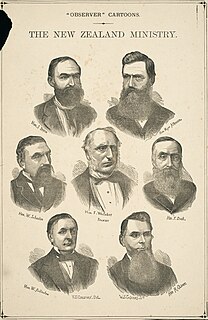
Conservatism in New Zealand, though related to its counterparts in other Western countries, developed uniquely over time. Advocates followed a political ideology that emphasised the preservation of traditional European beliefs, institutions and practices.

Cyclaxyridae are a family of beetles in the superfamily Cucujoidea. The only living genus is Cyclaxyra, with two species endemic to New Zealand. Other species have been named from fossils. They are also known as sooty mould beetles due to the association of Cyclaxyra with sooty mould. The extant species are mycophagous, feeding on spores, conidia, and hyphae.
















